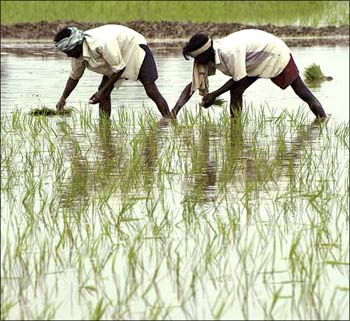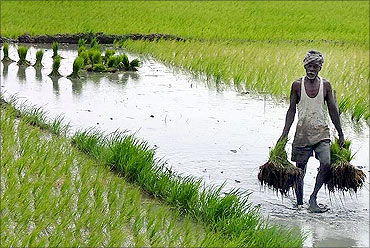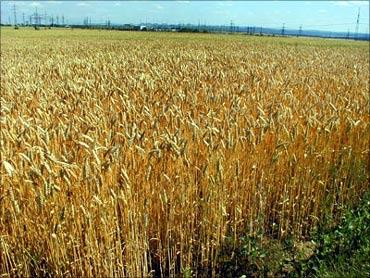
Regardless of the merits and demerits of foreign direct investment in retail, the fact is that a tie-up between organised retailers and farmers benefits both, as also consumers of farm goods, writes Surinder Sud.
Retail chains, irrespective of whether they are owned by foreign or local companies, usually find it advantageous to source their supplies of fresh agricultural produce locally, preferably from the growers themselves.
For this, they do not grudge investing in cold stores, refrigerated transportation and other necessary infrastructure.
. . .

It is also in their interest to introduce improved technology for production and post-harvest treatment of farm products to enable farmers to produce goods of the desired quality.
Viewed from this angle, the government's decision to permit FDI in retail -- with the insistence on a 50 per cent investment in back-end infrastructure and at least 30 per cent procurement from small processors and manufacturers -- seems a welcome move.
However, farmers could have gained more without the rider of confining the foreign-funded retail industry to big towns with a population of above one million.
In fact, it would have been better to incentivise organised retail chains to spread out to relatively smaller towns to bring them closer to farmers.
. . .

That will facilitate better integration of the rural economy and urban markets through easier backward and forward linkages.
It is indeed noteworthy that despite adverse reactions from several quarters, rural-based political parties like Punjab's Shiromani Akali Dal and governments of agriculturally advanced states like Punjab, Haryana, Rajasthan, Maharashtra and Orissa, among others, have hailed the Centre's move to open up the retail sector.
The Confederation of Indian Farmers' Associations, in any case, has been demanding greater investment, including foreign investment, in rural infrastructure and retailing.
The federation, which spearheaded the crop-holiday movement in Andhra Pradesh, has even sought a special session of Parliament to consider farmers' demands that include FDI in retailing.
. . .

Lack of access to efficient and competitive markets and a paucity of modern facilities for post-harvest management, especially perishable items, are among the significant constraints that farmers face in raising their incomes.
A sizable part of the total farm output, 30 to 40 per cent, is spoilt even before it reaches markets.
Unfortunately, much of this loss goes to the farmers' account.
The agricultural marketing network and laws governing it are inadequate and outmoded.
Recent official estimates show that there is, on average, only one proper agricultural market in an area as large as 435 square kilometre.
. . .

Even in an agriculturally-advanced state like Punjab, which produces large volumes of marketable farm produce, each regular mandi caters to around 114 square kilometre.
Growers, therefore, have to either travel long distances or dispose of their produce in local informal markets, like rural 'haats', at whatever prices offered.
Retail trade's back-end linkages can change this situation by bringing the market to farmers' doorsteps.
This apart, the involvement of numerous intermediaries between farms and folks adds to marketing costs, escalating prices for consumers even while denying reasonable returns to growers.
. . .

The producers' share in the final price paid by consumers is often meagre, less than 30 per cent for perishable items like vegetables and fruit.
That is why the present spell of high food inflation has not benefited farmers.
Nor has it induced production to respond to demand and high prices the way it logically ought to have.
This anomaly can be rectified to a considerable extent through direct linkages between growers and retailers, minimising the intermediaries.
. . .

This aside, the presence of organised retail outlets nearer villages can encourage these to evolve demand-driven business models that involve the provisions of goods and services needed by farmers.
These can include farm inputs as well as supportive services like agricultural extension and bank counters or automated teller machines to meet most needs of farmers' at one place.
Some of the indigenous retail chains have already developed and successfully tried such models.
Others would surely stand to gain by emulating them.